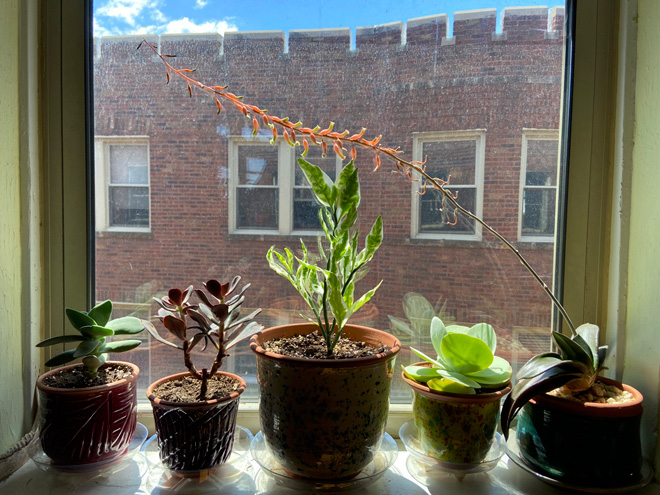
A few years ago, my partner Kyle noticed an abandoned orchid sitting on our cold porch while the rest of our houseplants were happily thriving inside. The orchid was on the brink of death, without flowers. Its leaves were shriveling. He came back inside and asked: “What did that orchid do to you?” Well, it did something.
Approximately fifteen years ago, that orchid was a wedding gift for me and my now ex. To make matters worse, it was gifted by a person whom I don’t want to be reminded of. When I explained all of this to Kyle, he forbade me from coming near the plant and spent the following year nursing it back to health. It bloomed for the first time in a decade, its two flowers facing away from each other. He named it Janus. Kyle and I got married since then.
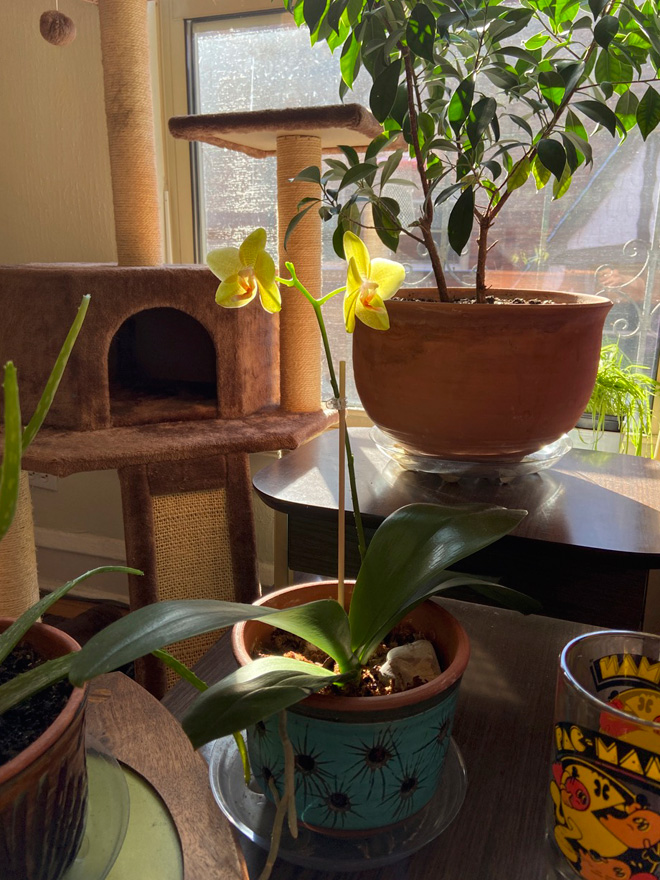
Plants respond to their environments and to how we treat them; they teach us about both the world and ourselves. I understood this after a conversation with my friend Michelle who began collecting houseplants during the pandemic. I gave her some cuttings, and a few months later she said that growing plants turned out to be an unexpected personal and emotional journey. Not only did she discover that she is an overwaterer, but the discovery made her realize that she “overwaters” human relationships as well. On another occasion, she sent me a picture of a plant pulled out for repotting. All of its roots were packed and tangled in the form of the pot it was in. When she saw how severely rootbound it was, she felt a kinship with this plant and asked herself why she could relate to it so deeply.
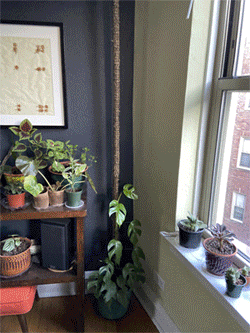
My own relationship to plants became clear after I allowed a Rhaphidophora tetrasperma to grow infinitely in a straight line up a moss pole. It is more common to see these plants in a bushy formation, grown densely by pruning and adding the cuttings back into the pot. When my friend Richard saw this version of the plant, he deemed it obscene and said, “A plant is not a Brancusi sculpture!” adding that I “spoil” my plants the way one might spoil a child. I enjoyed the symmetry, but I also wanted to see how far it would go and what it would do. Once the plant reached the ceiling, I chopped off the top portion. The plant grew a new shoot from the same spot, at the top, so I cut it again. To my surprise, after the second cut the plant “changed its mind” and a lateral branch emerged lower on the main stalk; the symmetry was lost. I discovered that I liked the new form better.
A good example of extreme control over plants is bonsai. My friend Paul described bonsai as a BDSM relationship between a human and a plant (in which the plant is presumably the sub). Unsurprisingly, I don’t have any bonsai. In fact, I tend to overpot my plants. I guess that makes me an overpotter—in human relationships, too. Poor boundaries can kill a plant just as easily as overwatering can.
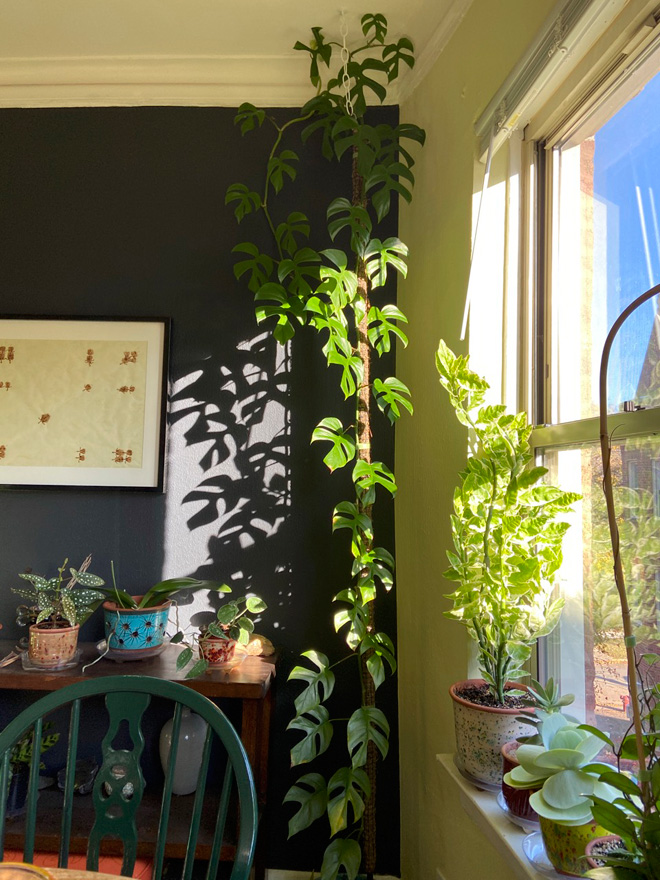
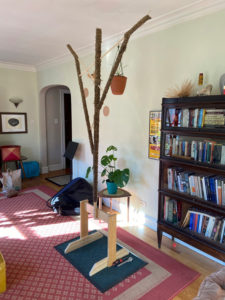
There are some pruning practices that I find unthinkable. One of them is cutting off the aerial roots on a Monstera deliciosa, which to me is like declawing a cat. I prefer to see the aerial roots dig in as they climb a moss pole. Last year, Kyle surprised me with a “moss pole” that looked more like a torture device: something between a pillory and a crucifix (Don’t tell him I wrote this). I appreciated the thoughtfulness and work that went into it, but the support overshadowed the plant. Overshadowing a monstera is not easy!
With all the potential for insight through houseplants, maybe it’s not so surprising that the pandemic generated a surge of plant enthusiasts. Plant shops across the country became overwhelmed with demand. In our apartment, the number of houseplants increased from 20 to over 100 varieties. Here are some highlights:
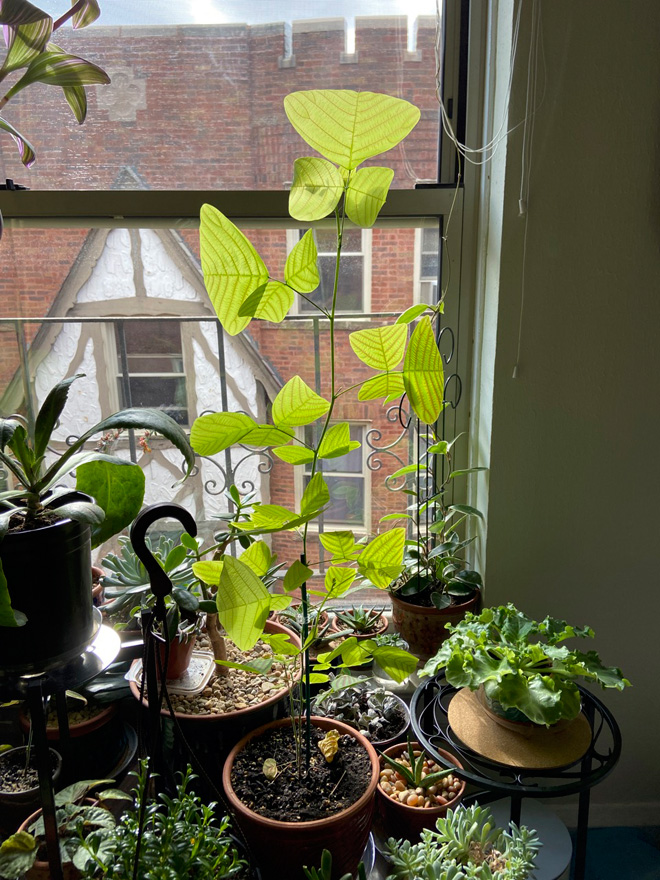
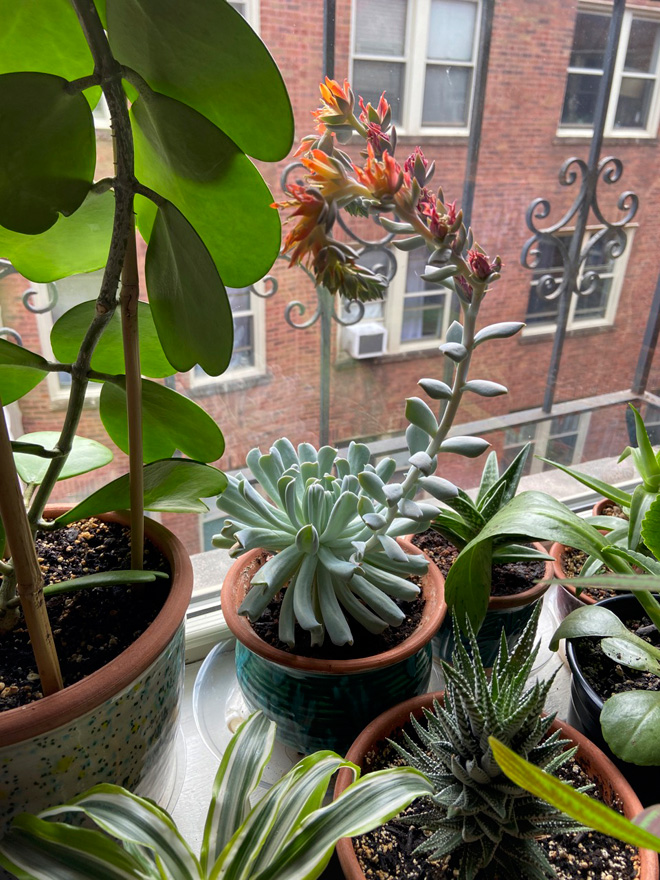
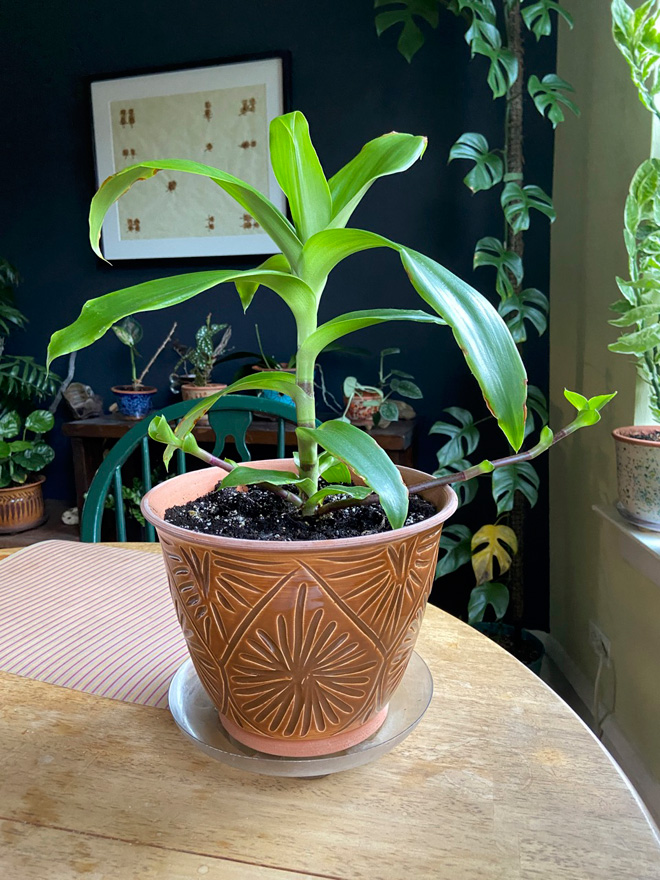
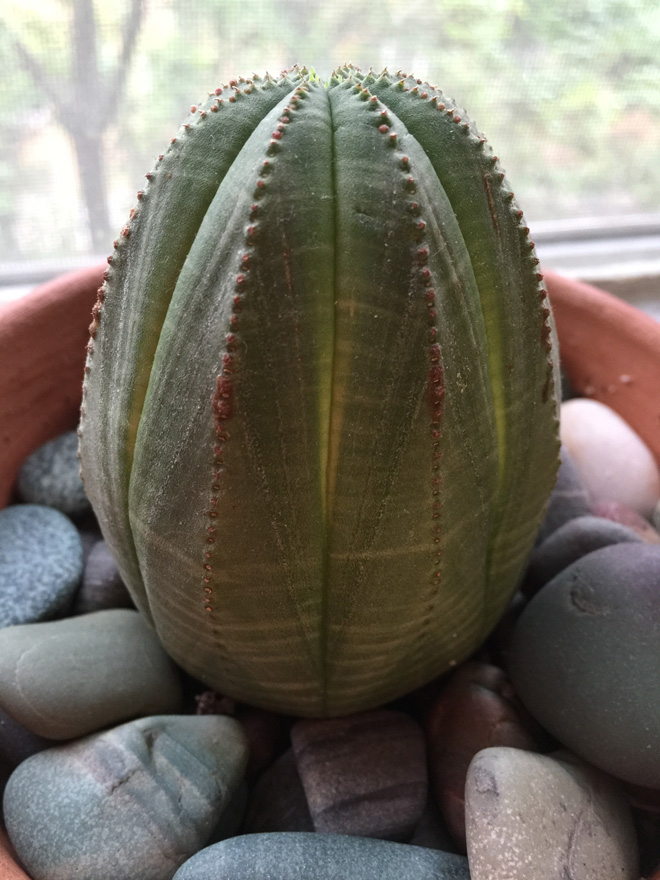
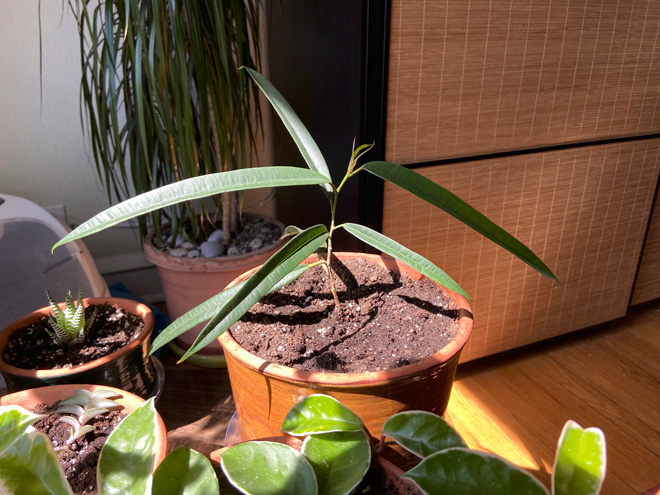
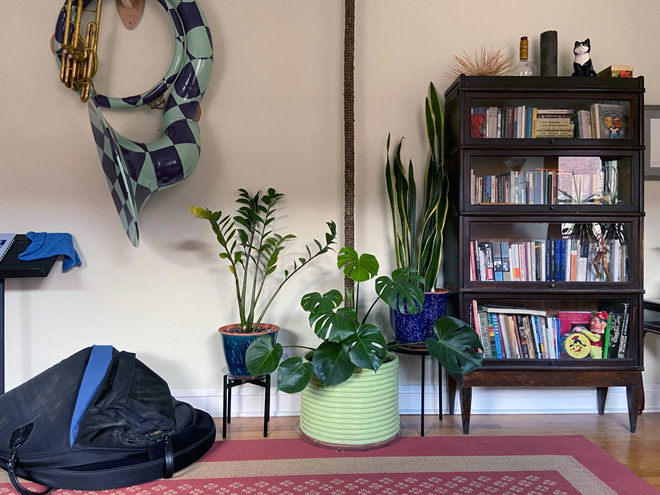
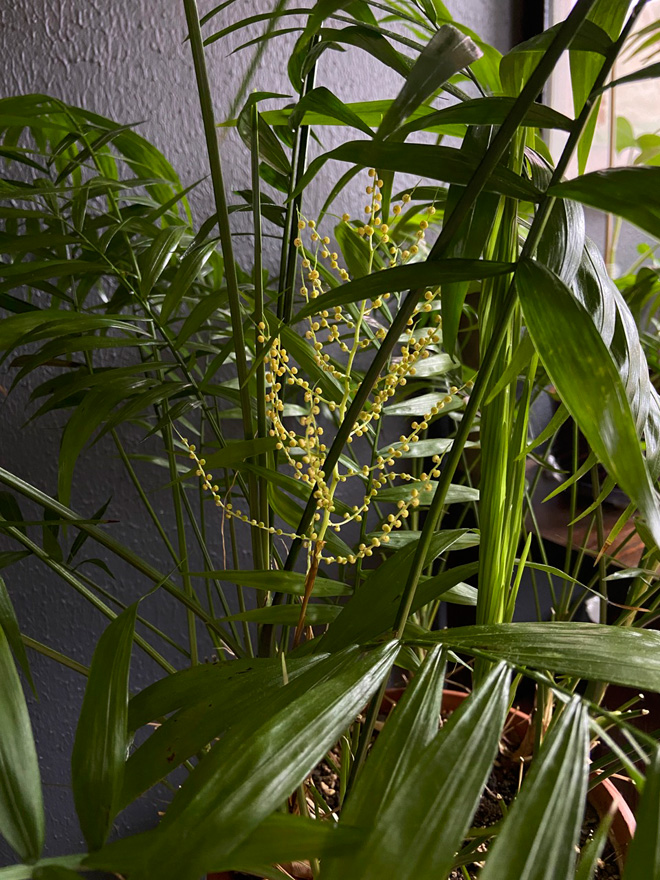
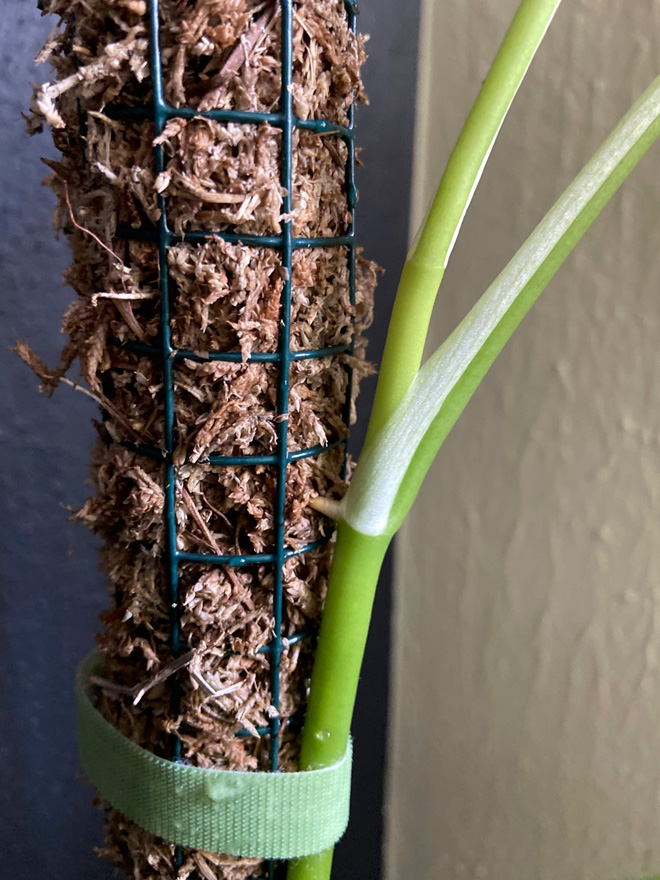
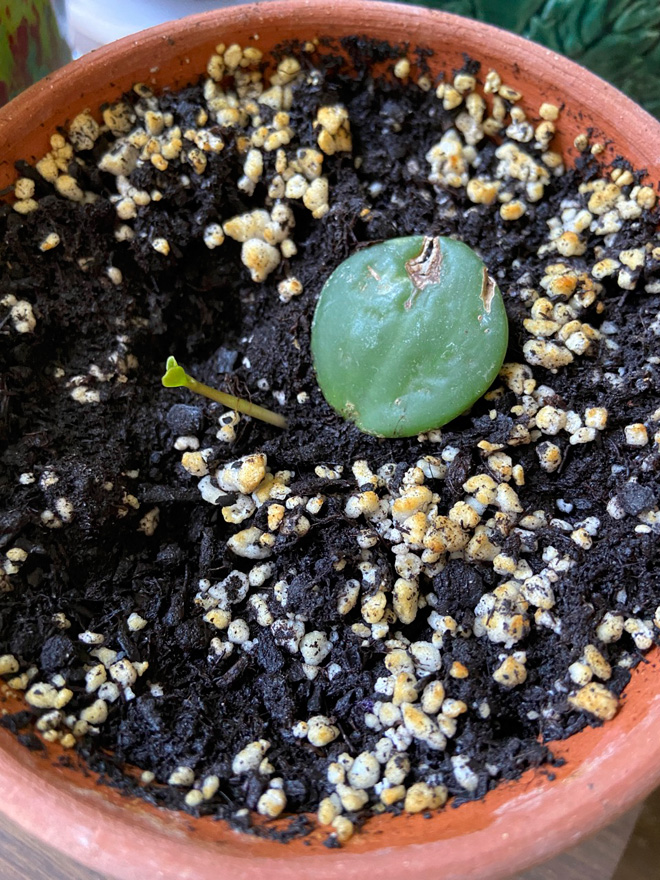
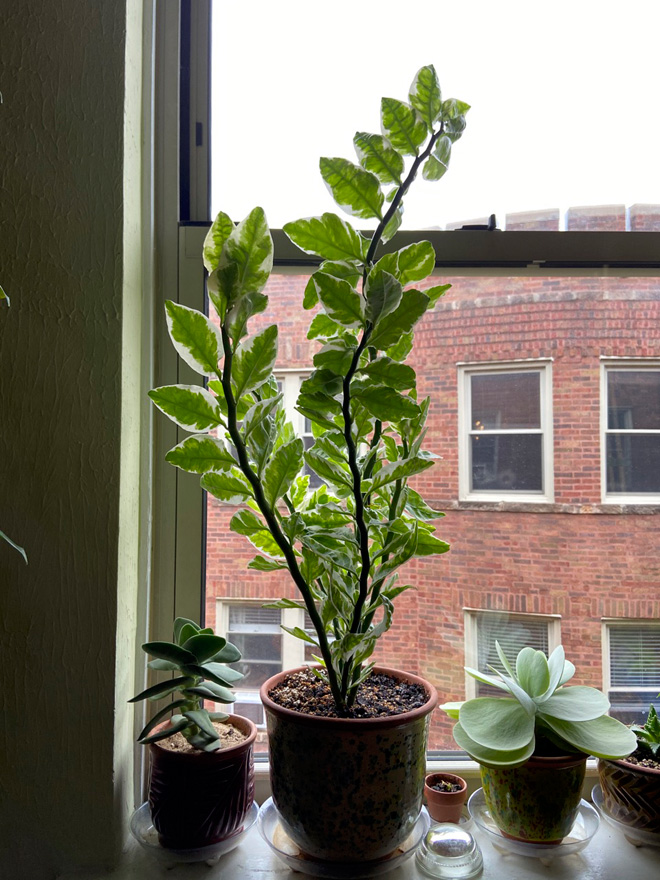
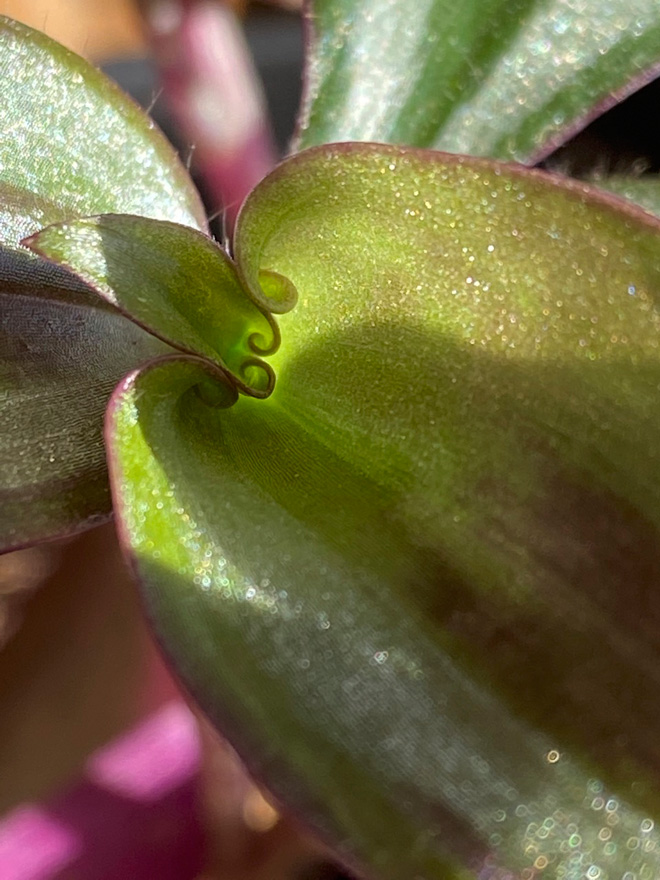
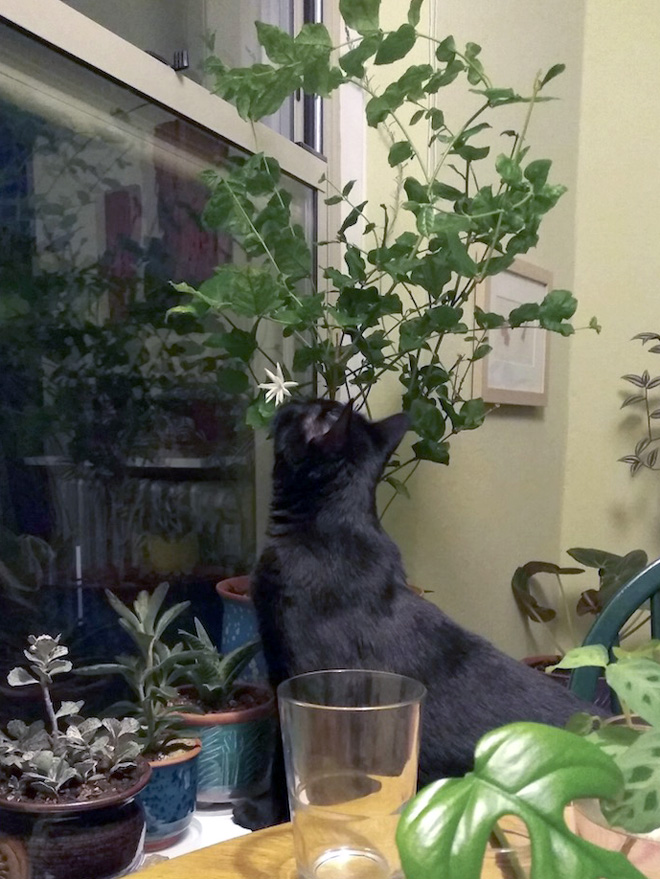
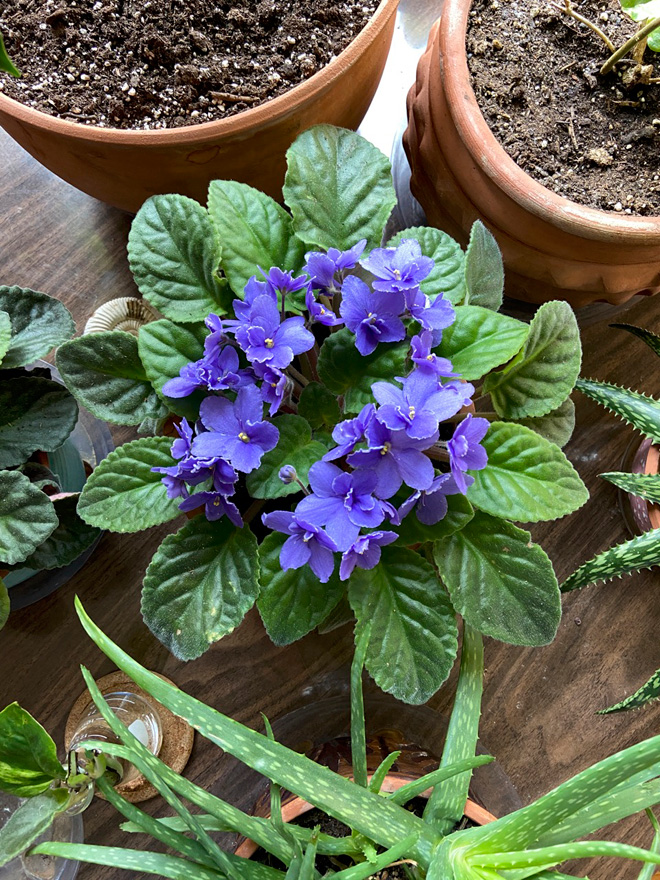
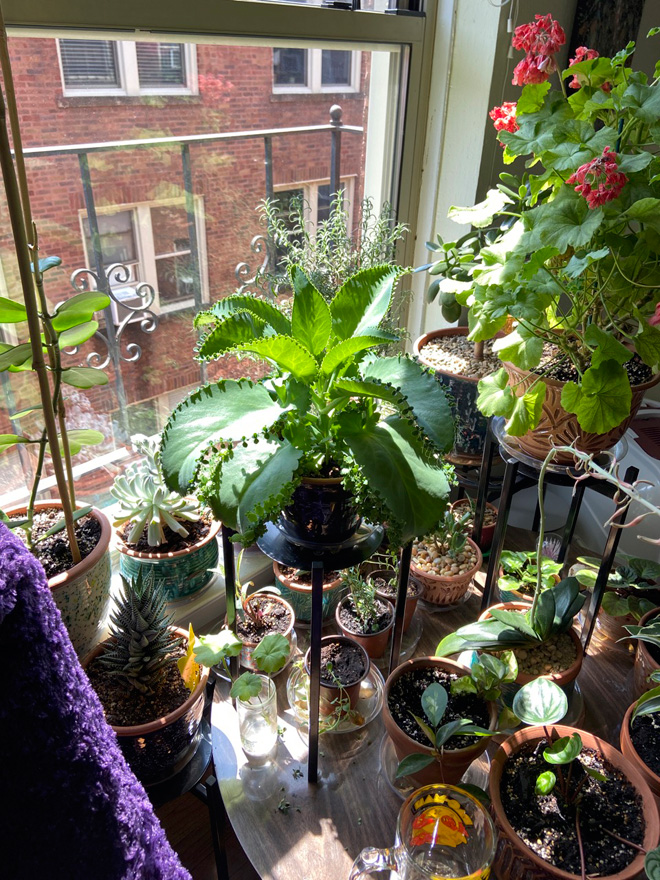
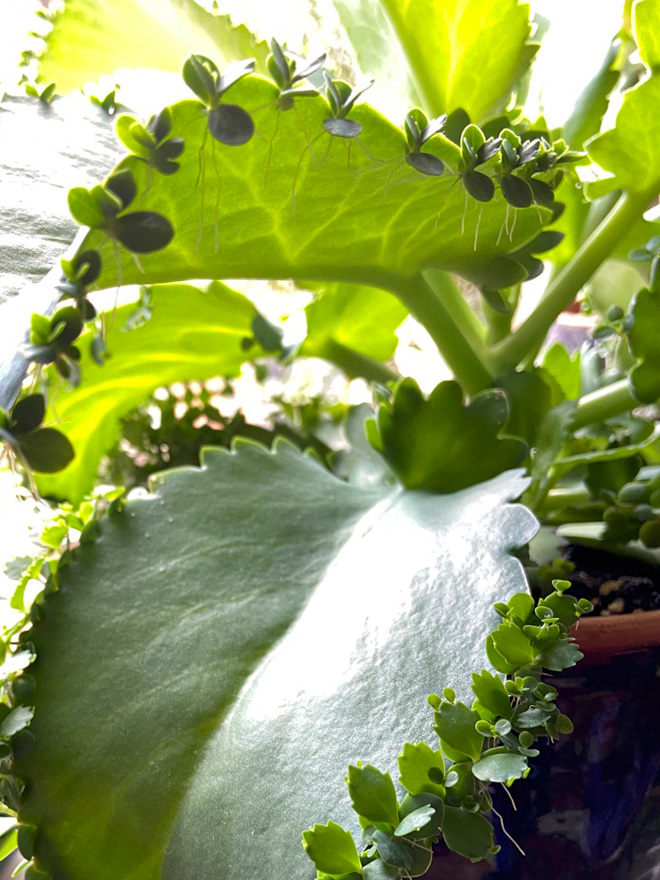
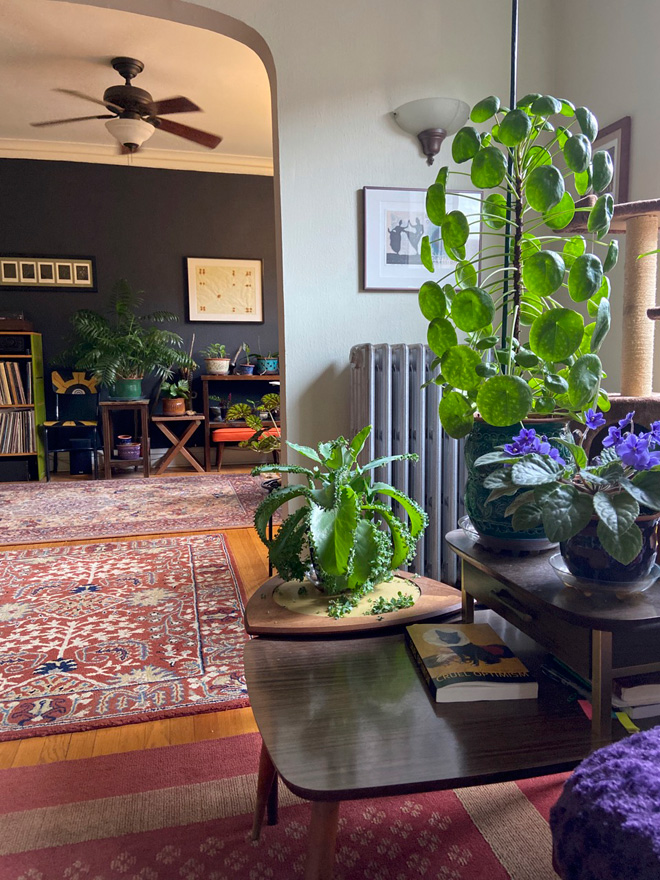
on the right was a gift from Richard.

Several theories regarding the pandemic plant explosion are circulating both online and in conversations among friends. Here are some of them:
• People are stuck indooors, so they bring plants inside.
• Spending more time at home leads to redecorating (with plants).
• Plant exchanges sustain relationships and create new ones.
• Caring for a living thing is therapeutic (and plants are relatively low-maintenance).
• Biophilia is real and consequential.
My own take is not too different from some of the above: caring for plants maintains sensitivity to physical phenomena. This is especially true during the pandemic, when so much of our attention is on the virtual world.
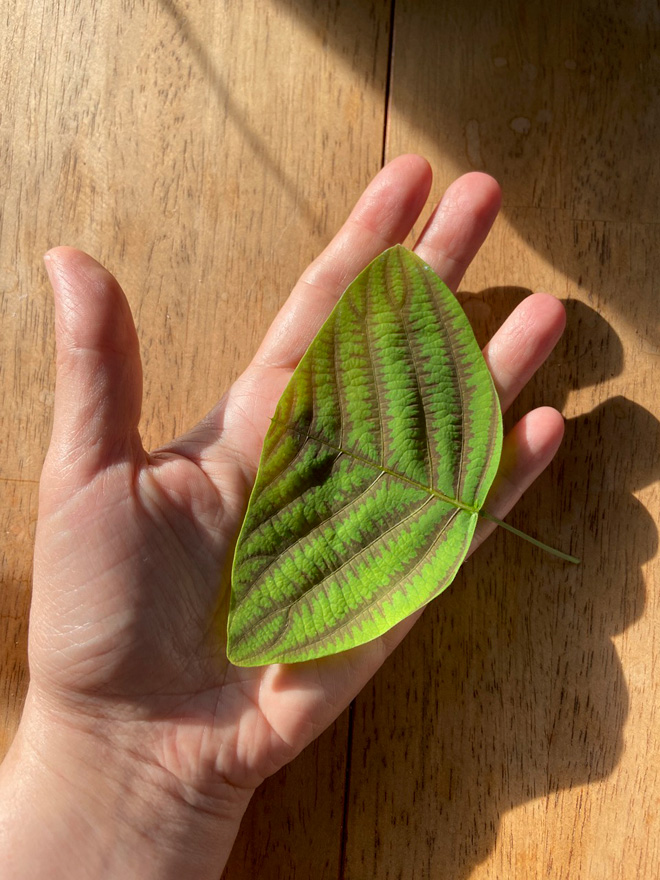
That was beautiful, your plants are lucky to have you.